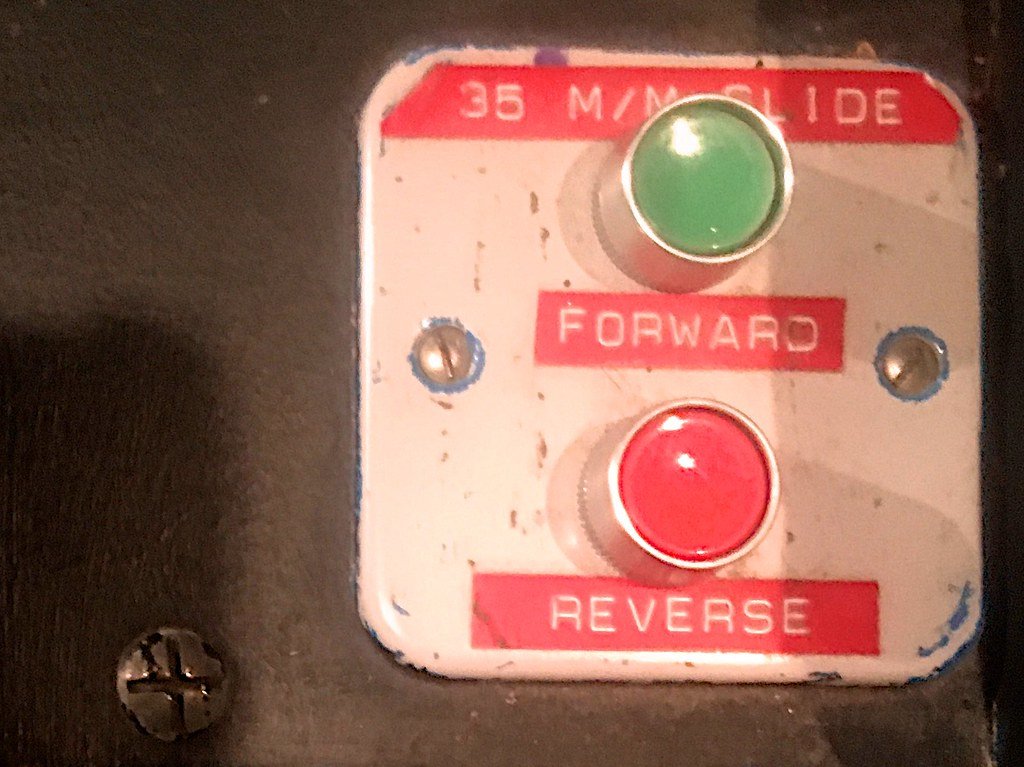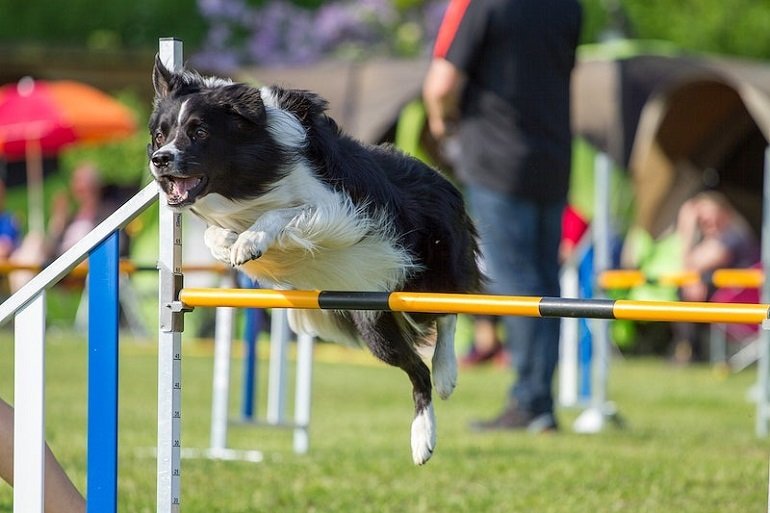Dog training has come a long way over the years, evolving from outdated practices that relied on punishment and dominance, to modern, effective methods that prioritize positive reinforcement and understanding. The art of clicker training, in particular, has captured the attention of dog owners and trainers alike, offering a comprehensive and humane approach to teaching our furry companions. With its foundation rooted in the principles of operant conditioning, clicker training has proven to be a powerful tool for shaping behaviors and building a strong bond between humans and their canine companions. In this comprehensive guide, we will delve into the intricate world of clicker training, exploring its origins, principles, and techniques, while providing the knowledge and understanding you need to embark on this exciting journey of training your dog with a click.
Table of Contents
- Introduction: Understanding the Basics of Clicker Training
- Building a Positive Association: Conditioning Your Dog to the Clicker
- Clicker Training Techniques: Mastering Basic Commands and Behaviors
- Overcoming Challenges: Troubleshooting Common Clicker Training Issues
- Advanced Clicker Training: Teaching Complex Skills and Tricks
- Q&A
- To Wrap It Up

Introduction: Understanding the Basics of Clicker Training
Are you looking for an effective and positive training method for your furry friend? Look no further than clicker training! In this introductory section, we will explore the basics of clicker training and how it can benefit both you and your pet.
What is Clicker Training?
Clicker training is a reward-based training technique that uses a small handheld device called a clicker. The clicker emits a distinct sound, typically a click, to mark the correct behavior at the precise moment it occurs. Combined with positive reinforcement, such as treats or praise, the clicker becomes a powerful tool to communicate with your pet.
How Does Clicker Training Work?
The clicker serves as a clear and consistent signal to your pet that they have performed the desired action. This immediate feedback helps them understand which behaviors are being reinforced. It allows you to communicate precise timing, making the learning process more efficient. By capturing and reinforcing desired behaviors, clicker training strengthens the bond between you and your pet while building their confidence and understanding of what is expected of them.
Benefits of Clicker Training
- Effective: Clicker training has been proven to be highly effective in teaching pets new behaviors and commands.
- Positive Reinforcement: It focuses on rewarding your pet for good behavior, creating a more joyful and cooperative learning experience.
- Clear Communication: The clicker provides a clear and consistent means of communication, allowing for better understanding between you and your pet.
- Fun and Engaging: Clicker training turns training sessions into enjoyable games, making learning a fun and interactive experience for both of you.
- Transferable Skills: The skills acquired through clicker training can be applied to various situations and can help with behavior modification and problem-solving.
Now that you have a basic understanding of clicker training, it’s time to grab your clicker and get ready to embark on an exciting training journey with your pet!

Building a Positive Association: Conditioning Your Dog to the Clicker
When it comes to training your furry friend, building a positive association is key. One effective technique is conditioning your dog to respond to a clicker. The clicker serves as a marker for good behavior and allows for precise timing, making it an invaluable tool in dog training.
To start conditioning your dog to the clicker, follow these simple steps:
- Expose your dog to the sound of the clicker. Press the clicker and immediately reward your dog with a treat. Repeat this several times within a short period.
- As your dog becomes familiar with the sound, introduce commands or tricks. For example, ask your dog to sit and once they do, click and reward. This reinforces the connection between the clicker sound and the desired behavior.
- Continue to practice and reinforce behaviors using the clicker and treats. Over time, your dog will begin to associate the clicker with positive experiences and will be more motivated to listen and obey.
Remember, consistency and patience are key. This conditioning process may take time, but the benefits are well worth it. Soon enough, you’ll have a happy, well-trained pup who can’t wait to hear that satisfying click!

Clicker Training Techniques: Mastering Basic Commands and Behaviors
Are you ready to unlock the potential of clicker training? In this section, we will delve into the art of mastering basic commands and behaviors using this effective training technique. With a clicker in hand and a desire to foster a deeper connection with your furry friend, you’ll soon be well on your way to a beautifully trained and well-behaved companion.
Building Strong Foundations
Before diving into specific commands, it’s crucial to establish a strong foundation for clicker training. Start by familiarizing your pet with the clicker sound and associating it with a positive reinforcement, such as a treat or praise. This helps create an immediate link between the click and reward, enabling your pet to understand the desired behavior quickly.
Mastering Basic Commands
Once your pet has grasped the concept of clicker training, it’s time to move on to mastering basic commands. Here are a few key commands you can work on:
- Sit: This is often the first command to teach your pet. Hold a treat above their head and, as they naturally move into a sitting position, click and reward.
- Stay: Gradually increase the duration your pet stays in place before clicking and rewarding. Start with just a few seconds and gradually build up to longer periods.
- Come: Begin by calling your pet’s name followed by the cue word “come.” When they approach you, click and reward. Gradually increase the distance between you and your pet for a more challenging recall.
- Leave it: This command teaches your pet to ignore or move away from something they are fixated on. When they look away or give up their focus on the object, click and reward.
Consistency is Key
Remember, consistency and patience are crucial when implementing clicker training. Practice in short, frequent sessions, and always reward the desired behavior promptly. Reinforce each command consistently until your pet becomes proficient.
With these clicker training techniques, you’ll be well-equipped to teach your furry friend an array of basic commands and behaviors. Happy training!
Overcoming Challenges: Troubleshooting Common Clicker Training Issues
In the world of clicker training, where positive reinforcement is the key to success, occasional challenges and setbacks can occur. However, with a little patience and some troubleshooting, you can overcome these common clicker training issues and continue on the path to success. Here are some tips to help you navigate through these challenges:
- Improper Timing: One of the most common issues in clicker training is improper timing. It’s important to press the clicker at the exact moment your dog performs the desired behavior. If your timing is off, your dog may not understand what they are being rewarded for. Practice your timing by clicking and treating consistently in training sessions, and gradually work towards a more precise click.
- Distractions: Distractions can be a major obstacle in clicker training. If your dog is easily distracted, start training in a quiet environment and gradually introduce distractions. Gradual exposure allows your dog to build focus and concentration. You can also increase the value of the treat you use during training to make it more enticing for your dog and help maintain their attention.
- Lack of Motivation: Sometimes, a dog may seem uninterested or unmotivated during clicker training. In these cases, it’s important to reassess your rewards. Ensure that the treats you are using are high-value and appealing to your dog. Experiment with different rewards to find what motivates them the most. Additionally, make sure training sessions are kept short and engaging to maintain their excitement.
Remember, clicker training is all about building a positive relationship with your dog and strengthening their understanding of desired behaviors. By troubleshooting these common issues and adapting your training approach, you can overcome challenges and achieve success in your clicker training journey.
Advanced Clicker Training: Teaching Complex Skills and Tricks
If you and your furry friend have mastered the basics of clicker training, why not take it up a notch? Advanced clicker training allows you to delve into teaching complex skills and impressive tricks that will not only challenge your pet but also strengthen your bond. With patience, consistency, and a sprinkle of creativity, you can unlock a whole new level of training possibilities.
Here are some tips and techniques to explore in advanced clicker training:
- Chaining behaviors: One way to teach complex skills is by breaking them down into smaller, manageable behaviors. By teaching your pet a series of individual steps and chaining them together, you can create a cohesive and impressive routine.
- Shaping: This technique involves rewarding your pet for incremental progress towards a desired behavior. By shaping each small step, you can guide your furry companion towards mastering complex skills. Remember to be patient and celebrate every small achievement along the way.
- Adding cues: Once your pet has mastered a specific behavior, you can introduce cues or commands to make it more predictable. Gradually reduce the clicker usage and rely on verbal or visual cues to signal the desired behavior.
Remember, advanced clicker training requires:
- Dedication: Consistency in training sessions is key to achieving success in teaching complex skills. Set aside regular, dedicated time to work on these advanced training tasks with your pet.
- Patience and persistence: Some complex behaviors may take longer to teach, so remain patient and persistent. Break down the tasks into smaller, manageable steps, and celebrate progress along the way.
- A positive and rewarding approach: Continue to use positive reinforcement techniques, rewarding your pet’s correct responses with treats, praise, or play. Ensure that the training experience remains enjoyable for both you and your fluffy companion.
By exploring advanced clicker training techniques, you can unlock your pet’s potential and take your training sessions to a whole new level of excitement and accomplishment. Remember, the journey is just as important as the end result, so enjoy the process of teaching complex skills and tricks together!
Q&A
What is clicker training for dogs?
Clicker training is a positive and effective method of teaching dogs using a clicker as a marker for desired behaviors. It involves pairing a sound (the click) with a treat or reward to communicate to the dog that they’ve done something right.
How does clicker training work?
In clicker training, the click serves as an instant signal to the dog that they’ve performed the correct behavior. The clicker is used to capture desirable actions, followed immediately by a reward. Over time, dogs learn to associate the sound of the click with positive consequences, helping them understand what is expected of them.
What are the benefits of clicker training?
Clicker training allows for precise communication with your dog, as the clicker offers a clear and consistent sound. It also helps build a strong bond between the owner and dog by using positive reinforcement techniques, which are not only effective but also enhance the dog’s confidence and enthusiasm for training.
How do I start clicker training my dog?
To begin clicker training, you’ll need a clicker, high-value treats, and a quiet training space. Choose a simple behavior to start with, such as “sit,” and click at the exact moment your dog performs the action. Immediately reward them with a treat, and repeat this process until the dog readily responds to the click.
Can clicker training be used for all dogs?
Clicker training is suitable for dogs of all ages, breeds, and sizes. It can be tailored to accommodate individual dogs’ needs and is effective in addressing behavioral issues or teaching new tricks. However, some dogs may be more motivated by other types of rewards, so it’s essential to adapt the training method accordingly.
How long does it take for a dog to learn through clicker training?
The duration of training varies depending on the dog’s breed, temperament, and the complexity of the behavior you’re teaching. Some dogs may catch on quickly, while others may require more time and repetition. Consistency, patience, and positive reinforcement are key to successful clicker training.
Can I use a verbal cue instead of a clicker?
While clickers are popular and effective, using a verbal cue can also work in clicker training. The purpose is to mark the behavior precisely, so any consistent sound or word can replace the typical clicker sound. However, a distinct click sound often makes it easier for dogs to distinguish and understand the command.
Are there any potential drawbacks to clicker training?
Clicker training, when done correctly, is a safe and gentle method. However, it does require consistency and precision to avoid confusion. Overusing the clicker without appropriate rewards may diminish its effectiveness. Additionally, some dogs may find the sound of the clicker initially startling, so it’s important to acclimate them slowly to avoid any negative associations.
Can I use clicker training to correct unwanted behaviors?
Clicker training primarily focuses on reinforcing positive behaviors. While it can indirectly help reduce unwanted behaviors by redirecting the dog’s attention, it’s vital to understand the underlying cause of the behavior and address it through proper training techniques and, if needed, seek guidance from a certified dog trainer.
To Wrap It Up
As we wrap up this comprehensive guide on clicker training for dogs, we hope you’ve gained a paw-sitive understanding of this effective training method. Remember, training your furry friend requires patience, consistency, and loads of enthusiasm. But fear not, for the clicker will be your trusty companion on this journey of teaching and bonding.
By now, you have learned the basics of clicker training, from selecting the right clicker to creating clear associations with rewards. You have discovered the wonders of shaping, capturing, and targeting behaviors, and have obtained the essential knowledge of timing to reinforce positive actions effectively.
In this guide, we’ve explored how clicker training can be used to address common behavioral issues, like leash pulling, excessive barking, and separation anxiety. We have also emphasized the importance of building a strong foundation of trust, respect, and communication between you and your furry friend.
Remember, training is not a one-time event, but a continuous process that requires dedication and ongoing effort. Use the clicker as your tool to strengthen the bond with your dog and embark on exciting new adventures together.
As you progress in your clicker training journey, don’t forget to celebrate small wins and be forgiving of your mistakes. Dogs, like humans, have their unique personalities and learning styles, and it’s crucial to adapt your training techniques accordingly.
Lastly, always remember to shower your furry friend with love, affection, and appreciation throughout the training journey. Positive reinforcement should extend beyond treats and praise, creating an atmosphere of joy and excitement that will keep your pup eager to learn and grow.
So, go forth and embark on this rewarding adventure of clicker training. May you witness the transformation of your curious canine into a well-behaved companion who brings infinite moments of joy and laughter into your life.
And with that, we bid you farewell, but not goodbye. We wish you and your four-legged friend bountiful training sessions filled with wagging tails, playful barks, and triumphs aplenty. Happy training!
As an affiliate, my content may feature links to products I personally use and recommend. By taking action, like subscribing or making a purchase, you’ll be supporting my work and fueling my taco cravings at the same time. Win-win, right?
Want to read more? Check out our Affiliate Disclosure page.